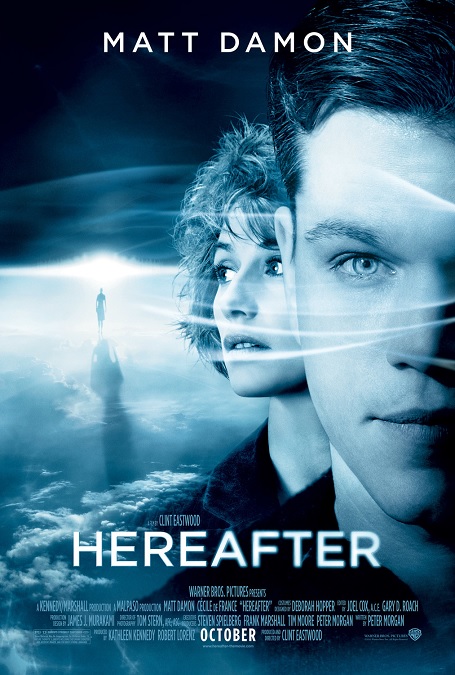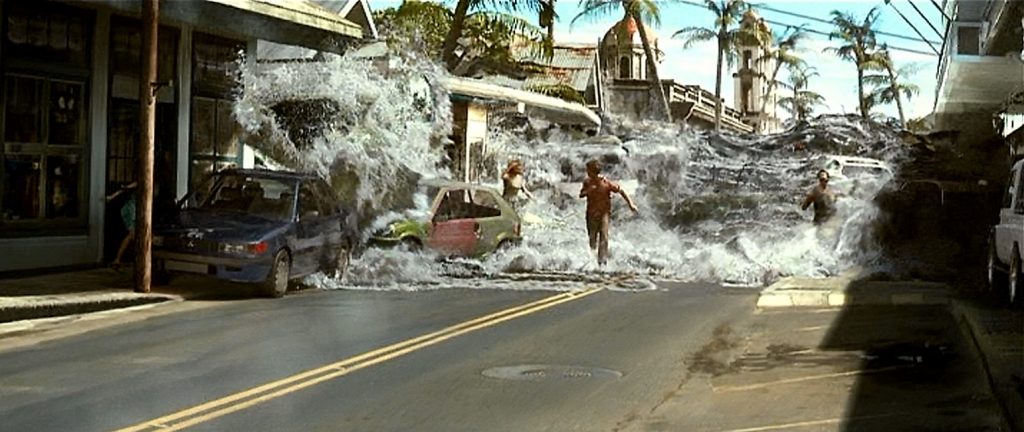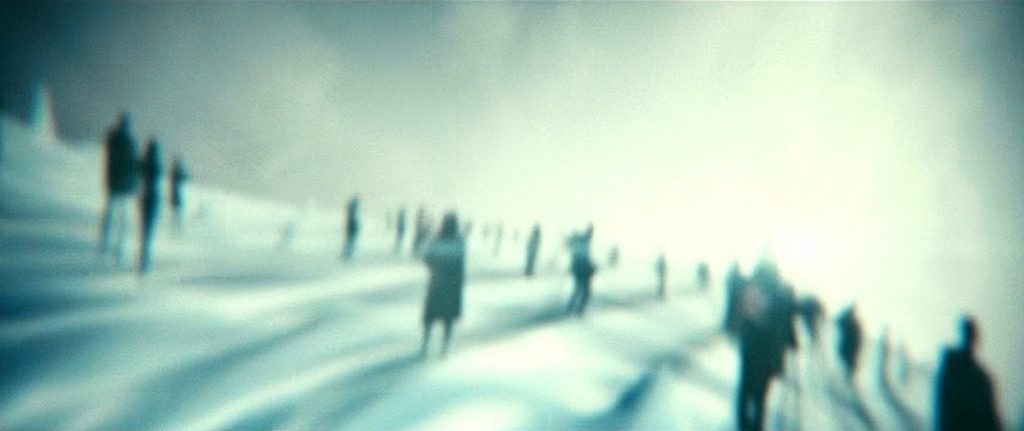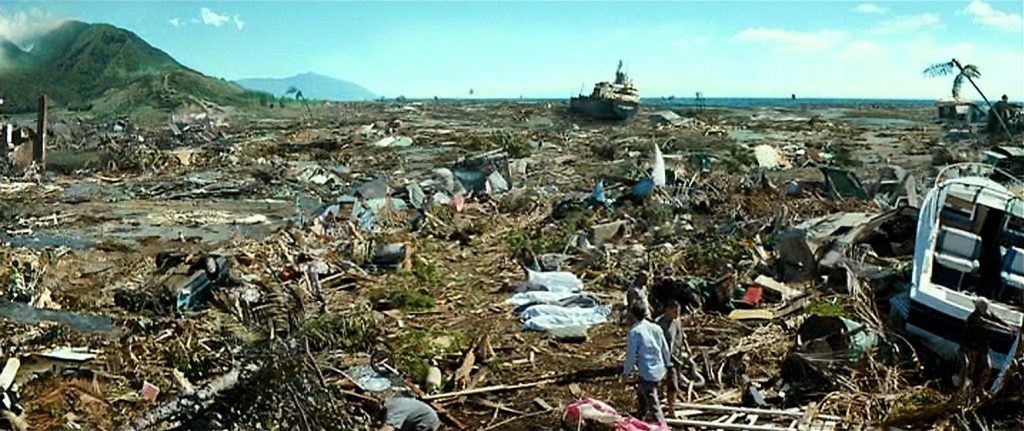



Hereafter – 2010

I have no idea why this movie was nominated for best visual effects. There, I said it. There were just so few of them, and while they were good enough, they were nowhere near the caliber of their competitors. The movie was an average film, that had a supernatural theme, so there was the potential for a more robust profile of visual effects, but they were just such a tiny aspect of this emotional drama.
Wikipedia had a single short paragraph devoted to the film’s visual effects, saying, “Visual effects work was carried out by Los Angeles-based Scanline VFX. 169 effects were created, the key sequence of which was the tsunami, which features ‘full CG water shots and CG water extensions to water plates, digital doubles, CG set extensions, matte paintings, digital make-up fx, and full CG environments with extensive destruction, from toppling digital palm trees to colliding digital cars’. An effect described as the ‘hereafter effect’ also appears, giving the viewer glimpses into the afterlife.”
I’d guess that 95% of those 169 effects took place in the first 9 minutes and 20 seconds of the movie, the entirety of which, was just over 2 hours long. The tsunami sequence was impressive but brief. We saw the moment when the water receded from the shore, formed a massive wave, assaulted a giant cruise ship, and crash onto the Hawaiian beach resort. We saw it flood a street, topple palm trees and telephone poles, pick up cars like toys, throw them into people and buildings, and drown the fleeing people. We saw one of the lead characters drown and have a vision of the afterlife. When she is revived, we see CGI abrasions on her face. Then we saw the devastated remnants of the destroyed city.
And that was it. The rest of the entire movie was virtually visual effects free. I found a short video on Youtube that broke down all the effects in the film, and I’ll list all the other effects shots in the film, according to that video. I went back to the movie and counted a combined total of 15 seconds of the “hereafter effect.” There was a shot where an airplane was digitally inserted in a twilight sky. We see a burst of flame and a few sparks come out of a London Underground train tunnel. Then we saw a few seconds of digital smoke coming out of Charring Cross Station. And finally, we get to see a few CGI tears roll down Marcus’ cheeks.
There was nothing else. All told, I’d estimate that after that first 9 minutes and 20 seconds of the movie, there was a grand total of 40 seconds of visual effects shots. I am trying to remain objective in my assessment, and I know that it isn’t about the quantity of the visual effects, but rather, the quality. But even there, the quality seemed no better or worse than the effects in any other average movie. So I’ll say it again. I have no idea why this movie was nominated for Best Visual Effects.
I suppose it might be worth noting that this was the first year that the number of nominees in the category was raised from three to five. But I can’t imagine that they were hard up for more worthy candidates to nominate. I just don’t get it.